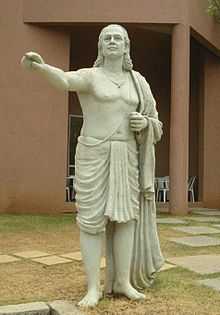517
From Wikipedia, the free encyclopedia
This article is about the year 517. For the number, see 517 (number).
| Millennium: | 1st millennium |
|---|---|
| Centuries: | 5th century – 6th century – 7th century |
| Decades: | 480s 490s 500s – 510s – 520s 530s 540s |
| Years: | 514 515 516 – 517 – 518 519 520 |
| 517 by topic | |
| Politics | |
| State leaders – Sovereign states | |
| Birth and death categories | |
| Births – Deaths | |
| Establishment and disestablishment categories | |
| Establishments – Disestablishments | |
| Gregorian calendar | 517 DXVII |
| Ab urbe condita | 1270 |
| Armenian calendar | N/A |
| Assyrian calendar | 5267 |
| Bahá'í calendar | −1327 – −1326 |
| Bengali calendar | −76 |
| Berber calendar | 1467 |
| English Regnal year | N/A |
| Buddhist calendar | 1061 |
| Burmese calendar | −121 |
| Byzantine calendar | 6025–6026 |
| Chinese calendar | 丙申年 (Fire Monkey) 3213 or 3153 — to — 丁酉年 (Fire Rooster) 3214 or 3154 |
| Coptic calendar | 233–234 |
| Discordian calendar | 1683 |
| Ethiopian calendar | 509–510 |
| Hebrew calendar | 4277–4278 |
| Hindu calendars | |
| - Vikram Samvat | 573–574 |
| - Shaka Samvat | 439–440 |
| - Kali Yuga | 3618–3619 |
| Holocene calendar | 10517 |
| Igbo calendar | −483 – −482 |
| Iranian calendar | 105 BP – 104 BP |
| Islamic calendar | 108 BH – 107 BH |
| Japanese calendar | N/A |
| Juche calendar | N/A |
| Julian calendar | 517 DXVII |
| Korean calendar | 2850 |
| Minguo calendar | 1395 before ROC 民前1395年 |
| Thai solar calendar | 1060 |
| Wikimedia Commons has media related to 517. |

Statue of Aryabhata (476–550)
Year 517 (DXVII) was a common year starting on Sunday (link will display the full calendar) of the Julian calendar. At the time, it was known as the Year of the Consulship of Agapitus and Paulus (or, less frequently, year 1270 Ab urbe condita). The denomination 517 for this year has been used since the early medieval period, when the Anno Domini calendar era became the prevalent method in Europe for naming years.
Events
By place
Europe
- King Sigismund is opposed by his son Sigeric and has him strangled. Overcome with remorse, he retreats to the monastery that he founded, St. Maurice's Abbey (modern Switzerland).
China
- Emperor Wu Di of the Liang Dynasty becomes a Buddhist and introduces the new religion to central China. He demands that sacrifices to imperial ancestors are changed to using dried meat, instead of the traditional animals (goats, pigs and cows).
By topic
Religion
- Council of Epaone: Bishops of southern Gaul convene near Epao (present Anneyron) in Burgundy. The synod enacts the first legislation against wooden altars, forbidding the building of any but stone altars with chrism (a mixture of oil and spice).
Science
- Aryabhata compiles his manual of mathematics and astronomy (approximate date).
Births
Deaths
- Dioscorus II, Coptic Orthodox patriarch of Alexandria
- Macedonius II, patriarch of Constantinople (approximate date)
- April 5 – Timothy I, patriarch of Constantinople
References
This article is issued from Wikipedia. The text is available under the Creative Commons Attribution/Share Alike; additional terms may apply for the media files.